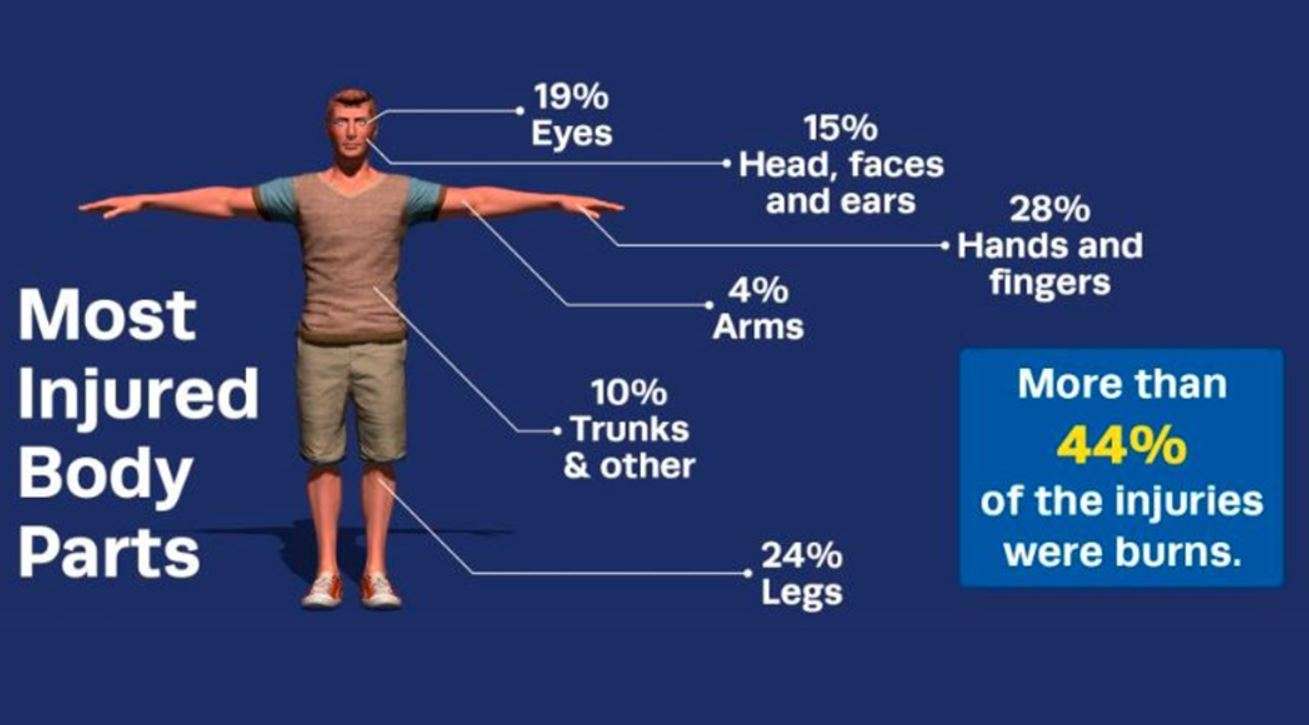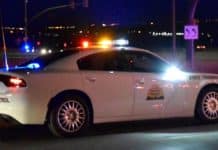SALT LAKE CITY, Utah, July 2, 2022 (Gephardt Daily) — Utah Gov. Spencer Cox is asking everyone be smart with fireworks this holiday weekend, and to consider leaving July 4th displays to the professionals.
“Unfortunately, weather conditions are lining up for extreme fire risk this weekend,” Cox tweeted Saturday. “Please check local fireworks restrictions and exercise the utmost caution. Better yet, just skip your home fireworks this year and check out the awesome public shows all over the state.”
Cox also suggested people check out a Department of Public Safety report on fireworks facts, released in advance of Independence Day and of Utah’s statehood day, on July 24.
The DPS report quotes the National Fire Protection Agency as saying more than 19,500 reported fires are started by fireworks annually.
The report also shares a graphic showing which body parts are most likely to be injured by fireworks. At highest injury risk are hands and fingers at 28%; then legs at 24%; eyes at 19%; head face and ears by 15%; trunk and other at 10%, and arms at 45%. More than 44% of those injuries were burns.

The report also shares an Instagram of a fireworks rocket fired at the head of mannequin with its head replaced by a watermelon.
Then there are some serious tips for people who use fireworks at home:
- Never allow young children to play with or ignite fireworks.
- Avoid buying fireworks that are packaged in brown paper because this is often a sign that the fireworks were made for professional displays and that they could pose a danger to consumers.
- Always have an adult supervise fireworks activities. Parents don’t realize that young children suffer injuries from sparklers. Sparklers burn at temperatures of about 2,000 degrees – hot enough to melt some metals.
- Never place any part of your body directly over a fireworks device when lighting the fuse. Back up to a safe distance immediately after lighting fireworks.
- Never try to re-light or pick up fireworks that have not ignited fully.
- Never point or throw fireworks at another person.
- Keep a bucket of water or a garden hose handy in case of fire or other mishap.
- Light fireworks one at a time, then move back quickly.
- Never carry fireworks in a pocket or shoot them off in metal or glass containers.
- After fireworks complete their burning, douse the spent device with plenty of water from a bucket or hose before discarding it to prevent a trash fire.
- Make sure fireworks are legal in your area before buying or using them.
And some numbers from a Consumer Products Safety Commission report on a significant upward trend in fireworks-related injuries over the last 15 years:
- Of the nine U.S. deaths, six were associated with firework misuse, one death was associated with a mortar launch malfunction, and two incidents were associated with unknown circumstances.
- There were an estimated 11,500 emergency room-treated injuries involving fireworks in 2021—down from the spike (15,600) experienced in 2020, during the first year of the COVID-19 pandemic, when many public displays were cancelled.
- An estimated 8,500 fireworks-related injuries (or 74 percent of the total estimated fireworks-related injuries in 2021) occurred during the 1-month special study period between June 18 and July 18 last year.
- Young adults 20 to 24 years of age had the highest estimated rate of emergency department-treated, fireworks-related injuries in 2021.
- In 2021, there were an estimated 1,500 emergency department-treated injuries associated with firecrackers and 1,100 involving sparklers.
- In 2021, the parts of the body most often injured by fireworks were hands and fingers (an estimated 31 percent of injuries) along with head, face, and ears (an estimated 21 percent).
- About 32 percent of the emergency department-treated fireworks-related injuries in 2021 were for burns.
- In 2021, approximately 31 percent of selected and tested fireworks products were found to contain noncompliant components, including fuse violations, the presence of prohibited chemicals and pyrotechnic materials overload.
Find the Utah DPS full report here.






